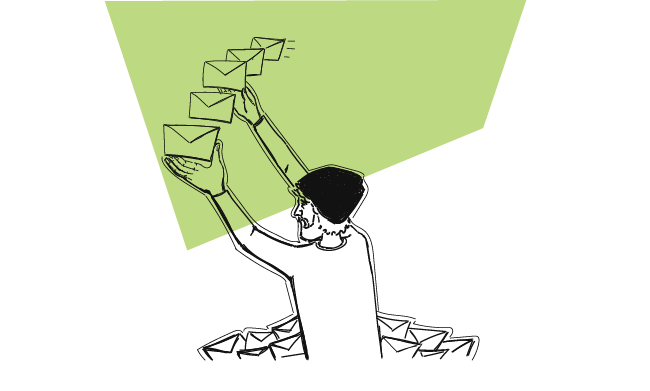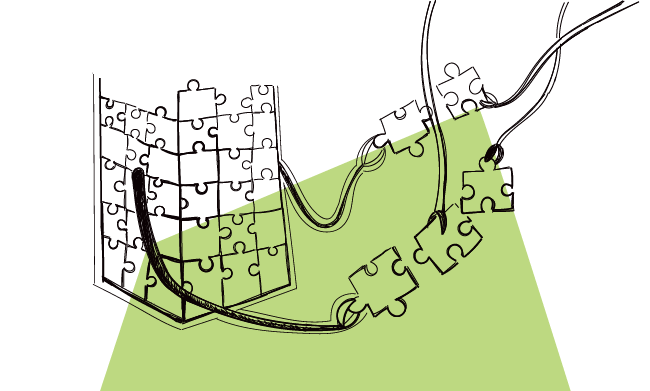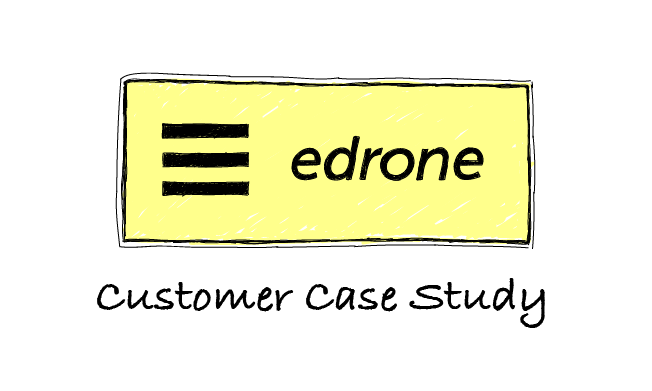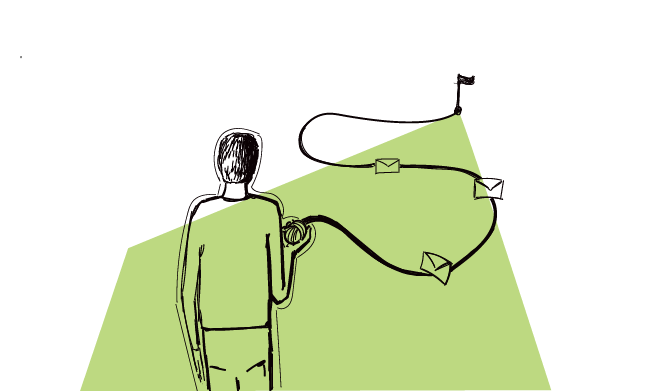Your sales team puts a lot of effort into finding the right prospects and starting a relationship with them, warming them up from cold to sales-ready. But conversion is not the end of a customer journey. It’s actually just the beginning. And if you want to maintain the relationship your sales team has started, it’s very important to take care of your customers’ experience from the very beginning.
If the customer journey kicks off smoothly and the customers know how to succeed with your product from day one, it’s more likely they will stay loyal to your solution and recommend it to others. It’s important for any business, but especially for a SaaS company.
Let’s see how to plan a SaaS customer onboarding process that will help you maintain a high customer retention rate and build brand advocacy. Based on our own experience.
STEP #1 Segment your customer base
Your onboarding process should start with analyzing your newly acquired customers and selecting those who fit your ICP. Why is that important?
Because the more targeted your onboarding communication, the more effective it will be. In order to help your customers succeed, you need to know what they want to achieve with your SaaS product. And to know that, you need to be familiar with their business goals. That’s why focusing on your ICP is the way to go.
If you don’t have your ICP defined yet, check how we did it at Woodpecker:
What Does “Ideal” Really Mean in the Ideal Customer Profile? >>
Once you have analyzed your customer base and chosen the right contacts, it’s time to focus on helping them get started off on the right foot.
STEP #2 Create an onboarding email sequence
Let’s move on to writing the content of the onboarding emails. Your sequence should contain an opening email and two or three follow-ups.
What to write in the opening email copy?
The opening email engages the customers into the onboarding. It’s a place for the Customer Success Officer to introduce themselves as a person who will guide a customer through the onboarding stage. The opening email should also highlight the value of the product, or in other words, showcase how it can improve your customers’ business.
How to do that? For example by mentioning a few customer success stories. It’s best to choose cases of companies similar to the target group in some way. They may share the same business model or be their industry peers. The point is to give your customers real-life examples of companies they might be familiar with who are now the power users of your product.
To get a better picture of what I mean, check this example of an opening email copy:
Hi ({FIRST_NAME}), Thanks for signing up to Colliber.co. We’re thrilled to have you as our premium user! My name is Lily and I’m the Customer Success Officer in Colliber Team. I’d like to guide you on how to incorporate Colliber into your process to get the best results. Let’s start with some pro tips for smooth technical setup. In order to sync the tool with your customer database and save time on manual data import, you need to generate the API key and add it to your CRM. To do that, open your Colliber account and go to Settings–>API key and generate the code. Here’s a tutorial on how to do that. If you need help, don’t hesitate to contact me. PS In the meantime check how Colliber helped {{SNIPPET_2}}’s team improved their {{SNIPPET_2}}: click here to read the case study.
—
Best
Lily
Customer Success Officer at Colliber.co
What’s the pattern here?
- After greeting a new customer, you should introduce yourself and explain why you reached out to them.
- Then, you can give a helpful tip on a tricky part that you know your customers often get stuck at. Leave the detailed instructions to a separate tutorial under a link. But keep in mind that the customers at the onboarding stage don’t want to know all the nitty-gritty of your solution. They just want to see how to get started and how to use your tool to achieve their desired outcome.
- Finally, you may want to show your product in a practical context. For example, mention a relatable case study that supports the value of your product for a company like theirs.
How to add value in the follow-ups?
Should you always include follow-ups? Definitely yes. This way you show the customer that the emails they receive are not just automatic messages generated by the system, but come from a real human being who wants to build rapport with them.
Follow-ups should be focused on giving your customers even more value by showcasing your tool in a practical context. To do that, you can use other customers’ success stories, similar to the opening email, or blog posts featuring possible use cases of your tool.
STEP #3 Analyze the stats
There’s no ultimate approach to the onboarding process. Every business and every customer group is different, to tell the truth. To figure out what subject line grabs your customers’ interest, or what email content turned out to be most helpful for them, you need to monitor and analyze the stats. And to draw conclusions that will give you a hint about what works and what to improve in the future.
Also, try not to stick to one approach for too long. Set up different sending time or come up with various versions of the subject line and email content. But before making any changes to your strategy, remember to A/B test the new approach first.
What is A/B testing about? It’s an approach to prepare two versions of the same email that differ in just one element, for example, the subject line. Those two email versions should be sent to two separate, but similar groups of customers. Then, you analyze these two versions in terms of performance and see which one has a better open rate. This is the version you may want to stick to.
Learn more about A/B testing from the following blog post:
My open, reply or interest cold email metrics are low, what can I A/B test? >>
To sum up
The key to a successful customer onboarding process in a SaaS company is customer segmentation and focus on adding value. By narrowing your target group to the customers who fit your ICP, you can tailor the onboarding process to their needs.
Keep in mind that there’s always some room for improvement and regularly analyze the results of your onboarding campaign to know what works and what could be improved in the future.
Fingers crossed for your next onboarding campaign!
READ ALSO

How to Use Personalized Emails to Improve SaaS Customer Retention
If you're in a SaaS business as we are, you know that you need the right strategy to deal with churn. Etienne Garbugli from Highlights, new software that uses a subscription model, wrote a guest post for the Woodpecker blog. All about using email for customer retention.

Why Integrations Are Your Growth Engine in SaaS?
Have you just gained your first 100 customers? Congratulations! It’s your first big milestone. As your company is gaining traction, your next steps should be to increase the value of your app to the current users and maintain further growth of your customer base. It may seem difficult to find the right balance with limited resources, but there’s a way to achieve both goals in one fell swoop. Keep reading to find out more.

Customer Case Study: How edrone.me Builds Relations with Future Customers Using Cold Email
It's a dream for a SaaS team when they hear that a customer of theirs is satisfied with the service and wants to share their experience as a case study. That's what happened to us when Michal Blak, the Co-founder and CEO of edrone.me told us that he's open to tell the story of his team's experiences with Woodpecker. Michal Konieczny, who takes care of business development at edrone, added his two cents and here we are. Check how the e-commerce CRM uses Woodpecker to start conversations with their ideal customers.

